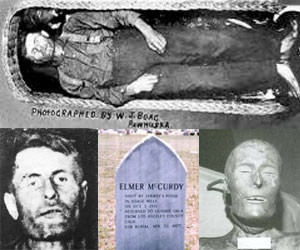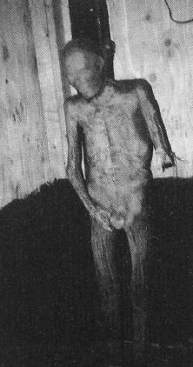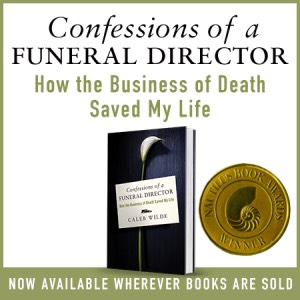Archive for year 2014
10 Playgrounds Sponsored by Funeral Homes
What funeral photography is about: 5 steps
Today’s guest post is written by Australian funeral photographer John Slaytor:
When I tell people I’m a funeral photographer they can be slightly taken aback. They remove “funeral” from the occupation and replace it with “wedding”.
They think, “How can you be a photographer at a funeral? How can you ask people to smile?”
Well, that’s not quite the point. And here are 5 (there are heaps more) points I’d like to share about being a funeral photographer. It might not be what you first imagine!
ONE. A funeral photographer isn’t a wedding photographer!
When a wedding photographer turns up at a wedding everyone knows what to expect and how to behave. When I turn up at funerals people don’t know what to expect. They’re not in a familiar situation and didn’t expect a photographer to be present. There’s no protocol with a funeral photographer so once they’ve seen you they tend to ignore you. You thus become invisible and it’s at that point that you can take really good photos.
TWO: Discretion is key to funeral photography
As you move around discretely, you can capture love, tenderness and genuine emotion. No one is performing for the camera. You also do have images of people smiling and laughing, it’s not all blubbering and red eyes from weeping, as people so frequently imagine.
THREE: As a funeral photographer you get to capture tenderness
At funerals people are at their most human and it’s this that I love capturing.
I’m interested in people’s humanity. Capturing tenderness. It’s the emotion that people give to each other that is the most moving.
FOUR: As a funeral photographer you’re enabling people to grieve
You perform a service. You’re recording a gathering of people who’ve loved the deceased and it’s that love that you’re capturing. You’re giving them something that they can remember and look at and see a family/friends united. So you are preserving the memory of a person.
FIVE: As a funeral photographer you’re giving something tangible to preserve memories
In the west we’ve dispensed with death. The reminders of death (gravestones) are diminishing. Photos are one of the few ways left of preserving that memory by something tangible.
*****
ABOUT THE AUTHOR: John Slaytor has photographed funerals since 2007.
A professional photographer, John Slaytor’s photography has been purchased by Australia’s major institutions including the National Portrait Gallery, the National Library of Australia and the State Library of NSW.
An acclaimed photographer, John Slaytor has been in Australia’s most prestigious photography competitions including the National Photographic Portrait Prize, the Olive Cotton Prize and the Moran Photographic Prize.
You can visit John’s website by clicking the link: thefuneralphotographer.com.au
The Curious Case of Elmer McCurdy’s Embalmed Corpse
Via Wikipedia:
After leaving the Army in 1903, Elmer McCurdy and two associates attempted to acquire money via robbery but were not successful. In their first try, they used too much nitroglycerin and destroyed the money they were attempting to steal. Their second attempt also netted them little. After their third attempt (a train-robbery), a posse tracked McCurdy to a barn, where he then died in a shoot-out.
His body was subsequently taken to a funeral home in Pawhuska, Oklahoma. When no one claimed the corpse, the undertaker embalmed it with an arsenic-based preservative and allowed people to see “The Bandit Who Wouldn’t Give Up” for a nickel. People would place nickels in McCurdy’s mouth, which the undertaker would collect later. As increasingly large numbers of people came to view his remains, McCurdy was said to have made more money in death than in life. Many carnival operators asked to buy the mummified body from the undertaker, but he refused.
Almost five years after McCurdy died, a man showed up from a nearby traveling carnival known as the Great Patterson Shows claiming to be McCurdy’s long-lost brother. He indicated that he wanted to remove the corpse to give it a proper burial. Within two weeks, however, McCurdy was a featured exhibit with the carnival. For the next 60 years, McCurdy’s body was sold to successive wax museums, carnivals, and haunted houses. The body was part of the official sideshow that accompanied the Trans-American Footrace. The owner of a haunted house near Mount Rushmore, South Dakota, refused to purchase him because he thought that McCurdy’s body was actually a mannequin and was not lifelike enough. McCurdy’s corpse can be seen in the 1933 Dwain Esper exploitation film, Narcotic.[2]
Eventually, McCurdy’s corpse wound up at The Pike, an amusement zone in Long Beach, California which existed under various names until 1979.
In December 1976, during filming at Queens Park (A.K.A. The Pike), of the television show The Six Million Dollar Man episode “Carnival of Spies” (#4.17) (1977), a crew member was moving what was thought to be a wax mannequin that was hanging from a gallows. When the mannequin’s arm (some accounts say finger) broke off, it was discovered that it was in fact embalmed and mummified human remains. Later, when medical examiner Thomas Noguchi opened the mummy’s mouth for other clues, hewas surprised to find a 1924 penny and a ticket from Sonney Amusement’s Museum of Crime in Los Angeles. That ticket and archived newspaper accounts helped police and researchers identify the body as that of Elmer McCurdy.
Later, when medical examiner Thomas Noguchi opened the mummy’s mouth for other clues, hewas surprised to find a 1924 penny and a ticket from Sonney Amusement’s Museum of Crime in Los Angeles. That ticket and archived newspaper accounts helped police and researchers identify the body as that of Elmer McCurdy.
His remains were examined in 1976 by forensic anthropologists. The examination revealed incisions from his original autopsy and embalming, as well as a gunshot wound in the right anterior chest and a round in his pelvis. The round was a copper bullet jacket or gas check of approximately .32 caliber; analysis showed that the jacket was manufactured between 1905 and the 1930s.
Video superimposition of the remains with photographs of McCurdy’s corpse in the University of Oklahoma’s Western History Collection confirmed McCurdy’s identity.
He was finally buried in the Boot Hill section of the Summit View Cemetery in Guthrie, Oklahoma on April 22, 1977. The state medical examiner ordered that two cubic yards of concrete was to be poured over the casket, so that his remains would never be disturbed again.
The Shoebox: A Cute Death Joke
A man and woman had been married for more than 60 years. They had shared everything. They had talked about everything. They had kept no secrets from each other except that the little old woman had a shoe box in the top of her closet that she had cautioned her husband never to open or ask her about.
For all of these years, he had never thought about the box, but one day the little old woman got very sick and the doctor said she would not recover.
In trying to sort out their affairs, the little old man took down the shoe box and took it to his wife’s bedside. She agreed that it was time that he should know what was in the box. When he opened it, he found two crocheted dolls and a stack of money totalling $95,000.
He asked her about the contents.
‘When we were to be married,’ she said, ‘ my grandmother told me the secret of a happy marriage was to never argue. She told me that if I ever got angry with you, I should just keep quiet and crochet a doll.’
The little old man was so moved; he had to fight back tears. Only two Precious dolls were in the box. She had only been angry with him two Times in all those years of living and loving. He almost burst with Happiness.
‘Honey,’ he said, ‘that explains the doll, but what about all of this money? Where did it come from?’
‘Oh,’ she said, ‘that’s the money I made from selling the dolls.’
























